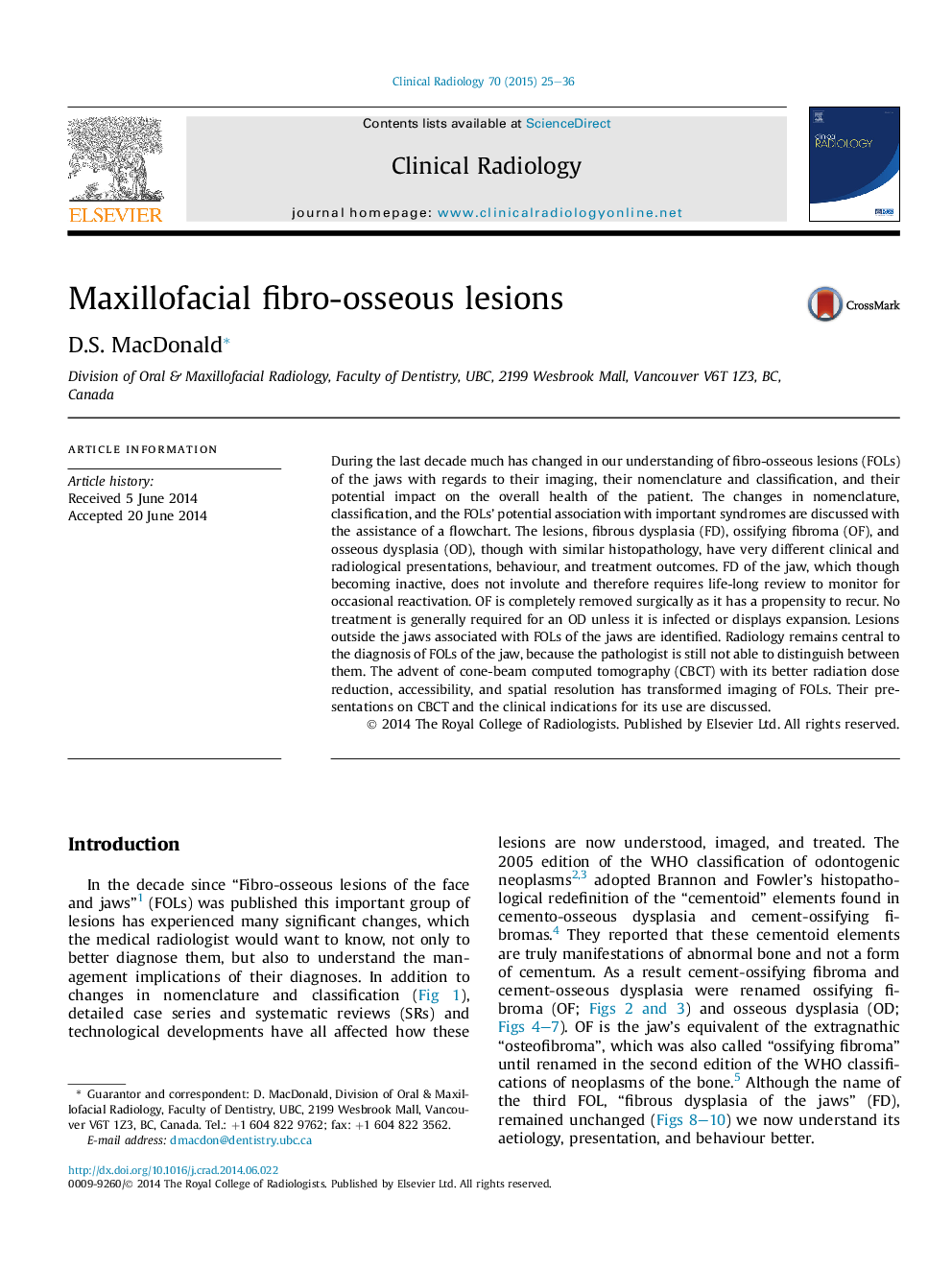| Article ID | Journal | Published Year | Pages | File Type |
|---|---|---|---|---|
| 3981518 | Clinical Radiology | 2015 | 12 Pages |
•This publication is an update of a successful review published in 2004.•It is based on evidence-based peer-reviewed research published in the last decade.•Figures feature cross-sectional imaging, in particular cone-beam computed tomography.•Some clinical and radiological features and outcomes differ between ethnic groups.•Some lesions may be associated with serious medical conditions.
During the last decade much has changed in our understanding of fibro-osseous lesions (FOLs) of the jaws with regards to their imaging, their nomenclature and classification, and their potential impact on the overall health of the patient. The changes in nomenclature, classification, and the FOLs' potential association with important syndromes are discussed with the assistance of a flowchart. The lesions, fibrous dysplasia (FD), ossifying fibroma (OF), and osseous dysplasia (OD), though with similar histopathology, have very different clinical and radiological presentations, behaviour, and treatment outcomes. FD of the jaw, which though becoming inactive, does not involute and therefore requires life-long review to monitor for occasional reactivation. OF is completely removed surgically as it has a propensity to recur. No treatment is generally required for an OD unless it is infected or displays expansion. Lesions outside the jaws associated with FOLs of the jaws are identified. Radiology remains central to the diagnosis of FOLs of the jaw, because the pathologist is still not able to distinguish between them. The advent of cone-beam computed tomography (CBCT) with its better radiation dose reduction, accessibility, and spatial resolution has transformed imaging of FOLs. Their presentations on CBCT and the clinical indications for its use are discussed.
